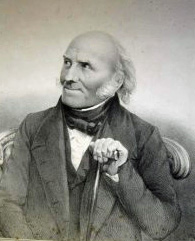William Clift
| William Clift FRS | |||||||||
|---|---|---|---|---|---|---|---|---|---|
 | |||||||||
| Born | 1775 | ||||||||
| Died | 1849 | ||||||||
| |||||||||
Contents
Notes
Office Notes
ESL Council 1844-45 Member
ESL Council 1845-46 Member
House Notes
elected 1844.01.16 in A1
Notes From Elsewhere
William Clift, (1775–1849), British naturalist, born at Burcombe, about half a mile from the town of Bodmin in Cornwall, on 14 February 1775, was the youngest of the seven children of Robert Clift, who died a few years later, leaving his wife and family in the depths of poverty.
William Clift, F.R.S.(1775–1849)
ONE hundred years ago, on June 20, 1849, William Clift, one of the most lovable figures in John Hunter’s world, died after more than half a century devoted to his master’s cause. Clift was born in his father’s flour mill at Burcome, near Bodmin, on February 14 (Hunder’s birthday), 1775, and it was on his hero’s birthday that, at the age of seventeen, he became Hunter’s prosector and amanuensis. When a year later Hunter died, his executors, Matthew Baillie and Everard Home, retained Cliffs services in the museum in Castle Street for seven years at a weekly wage of seven shillings. In 1800 the Government purchased Hunter’s collections, entrusted them to the Royal College of Surgeons, and appointed Clift conservator. He was succeeded in 1842 by Richard Owen, who had married his daughter Caroline. Perhaps the most dramatic event in Cliffs uneventful life was the evidence which he gave before the Parliamentary Committee on Medical Education in 1834 concerning the destruction of Hunter’s manuscripts by Sir Everard Home. Fortunately, he had with loving care copied nine folios. His transcripts were published by Owen in 1861 under the title “Essays and Observations”. A good anatomist and an accomplished artist, Clift enriched Matthew Baillie’s “Morbid Anatomy”(1793) with fine copper-plate illustrations. Through the influence of Sir Humphry Davy he was elected to the Royal Society in 1823. Only five feet in height, timid, retiring and kind-hearted, with a “head crammed full of knowledge”, Clift was a “meticulous gatherer of small facts”, who was “always ready to impart/tftd not to appropriate information”.
[from BBC History magazine Feb. 2019]: William Clift was a renowned anatomist and he often worked with the famous penal surgeon Sir William Blizard (1743-1835). Clift kept detailed notebooks that reveal the precautions both men took together before releasing a body for dissection. He recorded how the physical processes of dying were monitored every 10 minutes post-execution, until they were fully satisfied that the condemned had expired in the heart, lungs and brain ...
Publications
External Publications
Catalogue of the Hunterian Collection in the Museum of the Royal College of Surgeons by William Clift (1830)
· Currently unavailable
Law reporting as a business: An address delivered by Mr. William M. Clift at the ninth annual meeting of the Pennsylvania... by William M Clift (1908)
· Currently unavailable
Memoir of William Clift, F.R.S by William Clift and Richard Owen (1849)
· Currently unavailable
Notice on the Megatherium brought from Buenos Ayres by W. Parish ... From the Transactions of the Geological Society... by William Clift (1835)
· Currently unavailable
The Reminiscences of William Clift, of Bramley. Born 1828 and wrote these my reminiscences 1908. With plates,... by William Clift (1908)
· Currently unavailable
A Series of Engravings, accompanied with explanations, which are intended to illustrate The Morbid Anatomy of... by Matthew Baillie and William Clift (1803)
· Currently unavailable
Synopis of the arrangement of the preparations, in the Gallery of the Museum of the Royal College of Surgeons,... by William Clift (1818)
· Currently unavailable
William Clift, etc. A biography. With portraits by Jessie Dobson and William Clift (1954)